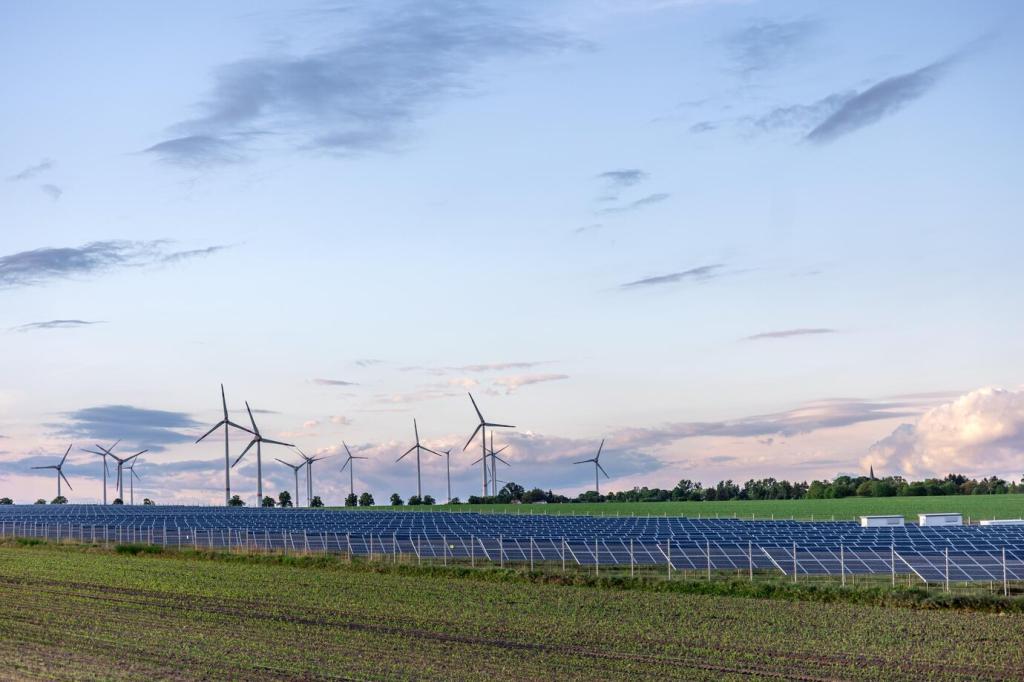Today’s theme: Eco-Conscious Home Automation Challenges. Welcome to an honest, optimistic exploration of the friction between convenience and sustainability—and the practical habits, stories, and settings that push a smart home toward genuine climate kindness. Join the conversation, subscribe for weekly experiments, and share your own wins and missteps.
Energy Use vs. Comfort: Finding the Honest Balance
An occupancy sensor in a drafty hallway kept waking our heating loop every time the dog wandered past at night. The house felt cozy, but bills crept upward. The fix was a quiet delay plus a “night calm” scene, proving that comfort and restraint can happily coexist. What delay values have worked for you?
Energy Use vs. Comfort: Finding the Honest Balance
A handful of USB-powered bridges and idle chargers can equal a bright bulb left on all day. A single smart plug with energy monitoring revealed that “standby” rarely means zero. Mapping these loads turned into a game—and a savings plan. Try auditing your hubs this week and tell us what surprised you most.
Energy Use vs. Comfort: Finding the Honest Balance
We replaced guessy schedules with weather-informed triggers and a simple rule: preheat only when someone’s truly on the way home. Presence from phones plus transit data beat static timers every time. Share your most reliable arrival signal, and subscribe to see our open template for adaptive preheating that avoids comfort spikes.

Sustainable Hardware Choices: Beyond Spec Sheets
A motion sensor that survives five winters and keeps its seals dry is greener than two flashy replacements. Look for replaceable batteries, open firmware, and modular parts. Tell us which brands you trust for long-term support, and we will compile a community scoreboard that rewards durability over hype.
Sustainable Hardware Choices: Beyond Spec Sheets
Thread and Zigbee mesh gently compared: both reduce radio chatter versus Wi‑Fi, but your home’s layout matters more than slogans. Fewer bridges, strong routing, and sensible polling intervals beat raw speed. Comment with your network map and we’ll help spot energy-heavy hops or chatty devices draining tiny batteries.
Data, Privacy, and the Planet: Cloud’s Hidden Kilowatts
Edge Automations Over Cloud Routines
Moving motion-to-light rules into a local controller cut latency and background polling. The home felt brisker, and we reduced cloud pings by thousands per day. If you migrated routines locally, how did your reliability and power use change? Share before-and-after screenshots to help others make the same leap.
Data Retention With a Purpose
We love charts, but infinite logs cost energy to store and process. Rotate historical data aggressively and pin only what drives decisions, like seasonal baselines. What retention policy keeps your insights intact without hoarding? Post your thresholds, and we’ll compare outcomes in a community digest next week.
Encryption, Polling, and Practical Tradeoffs
Strong encryption is nonnegotiable, yet chatty polling can waste power and bandwidth. Prefer push-based events and backoff strategies after failures. If you tuned polling intervals on sensors or cameras, tell us what values hit the sweet spot between responsiveness, privacy, and resource use in your home.

Daylight-Aware Lighting Scenes
Instead of fixed brightness, we tied dim levels to measured lux near the couch. On cloudy afternoons lights rise gently; on bright mornings they stay off. It feels natural, saves watts, and ends light wars. Try it for a week and tell us which spaces benefit most from a lux-first mindset.

Graceful Failover Beats Panic Modes
When the internet hiccups, some devices default to full power or bright lights. We scripted safe fallbacks: last-known comfortable states and delayed retries. It calmly protects comfort without waste. Have you built an outage plan? Share your fallback rules so others can copy and refine them at home.

Micro-Automations With Big Returns
Tiny rules stack up: pause the robot vacuum during peak hours, nudge thermostats one degree during movie scenes, and gate dryer runs on solar surplus. None are dramatic alone, but together they matter. Post your favorite micro-automation so we can feature it and quantify its savings next month.
Water, Heat, and Ventilation: The Underestimated Trio
Hot Water Only When You Need It
A presence-aware recirculation pump cut wasted heat without cold surprises. We pair it with low-flow shower reminders based on duration, not shaming. The result is comfort that respects the tank. Try a two-week experiment and report your change in burner runtime or kilowatt-hours for the community tracker.
Ventilation That Listens to CO₂ and Humidity
Running fans nonstop is easy, but sensors let you run them smarter. We trigger balanced ventilation when CO₂ or humidity thresholds persist for minutes, not seconds, to avoid flapping. Share your thresholds and climate region, and we will chart patterns to build region-specific starter profiles for readers.
Leak Detection Without Battery Guilt
Water sensors save heartbreak, but constant battery swaps hurt the planet. Consider wired spots for high-risk areas or rechargeable packs with scheduled testing. If you have a clever wiring route or charging routine, post photos and notes so others can protect floors and reefs at the same time.

Rechargeables Where They Truly Shine
High-drain locks and cameras love rechargeable cells; ultra-low-draw sensors often prefer long-lived primaries. Mixing chemistries intentionally prevents premature failures and waste. Tell us which models behaved best with rechargeables, and we will assemble a compatibility list maintained by readers—no marketing, just field-proven reality.

Harvesting Tiny Power From Sun and Motion
A small indoor solar strip in a bright stairwell kept a Thread border router and e-ink display alive for months. Motion-harvesting switches feel magical and remove battery clutter. If you tried energy harvesting, share the parts list and placement tips so others can copy your low-impact setup.
A Real-World Story: The Townhouse That Learned to Breathe
01
We tore out overlapping routines and rebuilt from first principles: presence, daylight, and meaningful thresholds only. The owner reported fewer notifications, lower bills, and a quieter home. If this resonates, subscribe for our teardown checklist and tell us which rooms you would declutter first in your setup.
02
Instead of logging every packet, we tracked weekly hot water runtime, heat pump cycles, and nighttime light-on minutes. Those three numbers guided all changes. What are your three? Comment below, and we will feature a reader’s metrics and the automations they inspired in a future post.
03
Morning brightness felt consistent even on gray days, hot water arrived faster with less fuel, and the house smelled fresher thanks to targeted ventilation. Efficiency did not feel like sacrifice—it felt like intention. Share how you want your home to feel, and we will help translate that into gentle, green rules.
